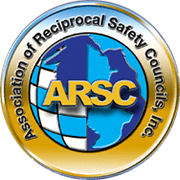By Connie Fabre, President & CEO, Greater Baton Rouge Industry Alliance (GBRIA)
Have you ever heard someone ask this question? Most people working in industry enjoy the prosperity that their jobs have brought to them and their families, however when people claim that industrial jobs are unsafe or that industry is harming our environment, some might wonder whether there is any merit to these claims. Although the vocal few speaking against industry can cause people to question, the data does not support their claims.
When it comes to safe jobs, industrial plant, maintenance, and construction work fare better than working for many service jobs. The Total Recordable Injury Rate (TRIR) number measures the number of people who sustain a non-fatal injury among 200,000 hours worked. In the U.S. in 2019 (the latest information available from the Occupational Safety and Health Administration), petroleum refiners averaged a 0.4, down from 0.7 in 2018, while manufacturing as a whole averaged 3.3. As a comparison, retailers averaged 3.4, hospitals 5.5, and state and local government 4.6. So, how does the petrochemical industry achieve such a good record? Sharing best practices, tackling common issues through associations and organizations such as ARSC, is a hallmark of this industry, however, it is each company and each employee’s attitude and focus on safety that makes the difference. Companies expend incredible resources to ensure that employees meet daily, complete Job Safety Analyses, Hazard Analyses, and training upon training in every aspect of hazards possible and how to avoid injury. Companies have pep rallies for safety and are unrelenting in convincing employees to believe that “ZERO incidents” is an achievable goal.
